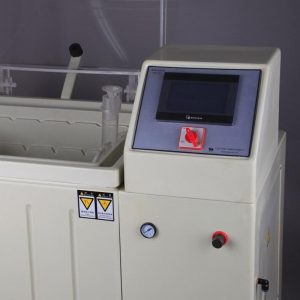塩水噴霧試験NSSとの違い, ACSSとCASS
Salt spray test is a common environmental test method used to test the corrosion resistance of metallic and non-metallic materials. It evaluates the corrosion resistance of materials by exposing them to salt spray and observing the degree of surface corrosion. Usually, the salt spray solution in salt spray tests is composed of sodium chloride (NaCl).

塩水噴霧試験NSSとの違い, ACSSとCASS
| 試験方法 | Salt spray solution components | Temperature of test | Time of test |
|---|---|---|---|
| NSS test | Sodium chloride (NaCl) | 35℃ | 24 時間, 48 時間, 72 時間, 96 hours and other different time periods |
| Key features: The basic salt spray test method is used to evaluate the general performance of materials against corrosion and simulate the corrosion situation in the natural atmosphere | |||
| ACSS test | Sodium chloride (NaCl) + acetic acid (CH3COOH) | 35℃ | 24 時間, 48 時間, 72 時間, 96 hours and other different time periods |
| 主な特徴: Acetic acid is added on the basis of NSS test, which can better simulate the corrosion situation occurring in urban and industrial environment | |||
| キャステスト | Sodium chloride (NaCl) + acetic acid (CH3COOH) + copper chloride (CuCl2 | 50℃ | 4 時間, 8 時間, 24 hours and other different time periods |
| 主な特徴: Copper chloride is added on the basis of ACSS test to speed up the corrosion process. Used to evaluate the rapid performance of materials against corrosion, it can be used to screen materials or evaluate the effect of new protective coatings | |||
Although the three salt spray test methods are different, they are all common test methods for evaluating the corrosion resistance of materials. 実際には, the appropriate test method should be selected according to the specific test purpose and requirements.
